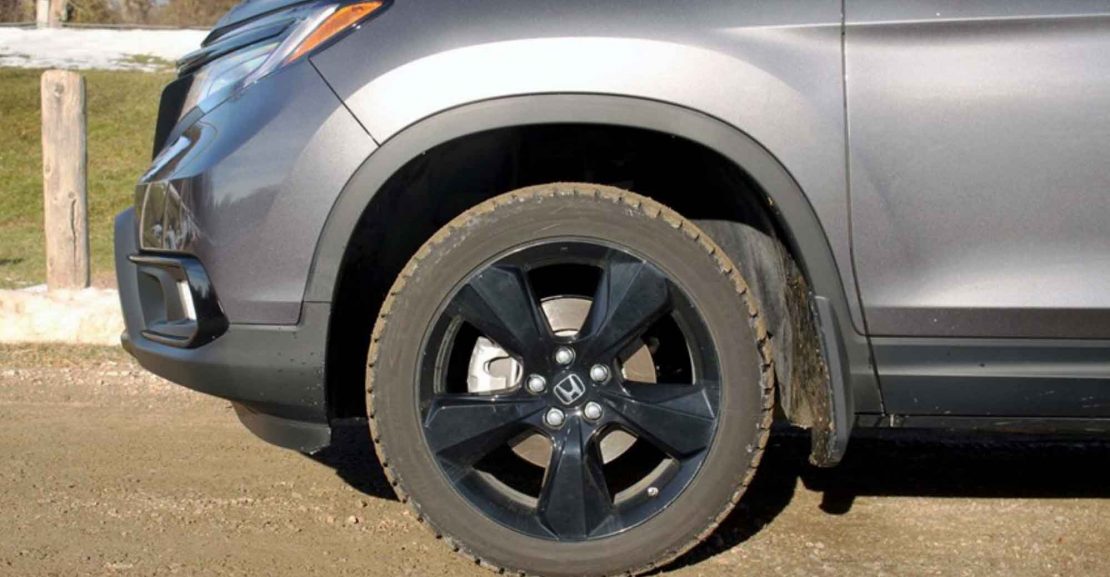Using less gasoline is good for the environment and it saves you money. Best of all, you don’t need to buy a hybrid car to do it. In fact, if you’re driving a few-years-old car or crossover that might be a bit behind on its maintenance, you could cut your fuel use by 10 to 20 per cent or even more with some basic TLC. A quick check of certain driving habits and your use (or non-use) of certain features in your vehicle can help increase your fuel mileage even further. Read on for some tips and advice on easy things you can do to reduce your fuel consumption and emissions today.
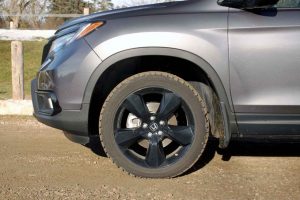
Check the Tires
Even if your vehicle has an electronic Tire Pressure Monitoring System (TPMS), regular tire pressure checks with a hand-held gauge are a great way to help reduce fuel consumption and save money.
Tires naturally tend to lose air pressure as time passes, which is why it’s important for drivers to make sure inflation pressure is always properly set. Check your owner’s manual for the full scoop on how to check and adjust the tire pressure on your car as well as what the correct pressure reading should be.
Not only do properly inflated tires help your vehicle achieve the fuel economy it was intended to deliver, but it also helps ensure your tires last longer, too. Both save you money.
Note that it’s not possible to assess tire pressure visually. Get a quality tire pressure gauge and check tire pressures as often as you can, ideally every time you fill up your gas tank.
Improper tire pressure is a leading cause of poor mileage and accelerated tire wear.

Check the Air Filter
Your engine is just like your lungs: It likes to breathe in a constant stream of clean, fresh air.
Our lungs have self-cleaning filters built in, but our car engines do not. That’s why it’s important to change your engine’s air filter regularly.
As the engine air filter gets clogged with dust, bugs, and debris, it slowly suffocates your engine and makes it work harder, perform poorly, and use more fuel than it needs to.
Your owner’s manual has the information you need to help you locate and check the air filter, but your favourite technician can easily do it for you if you’re not sure how. Replacing a badly clogged air filter can instantly restore lost engine power and cut your fuel bill by 10 per cent or more.
Can’t remember the last time you replaced it? It’s probably time for a new one.

Use Your Cruise
Most modern cars come with cruise control, which is one of the easiest and most effective fuel-saving tools available to drivers, even though plenty of us don’t use it as often as we should.
With cruise control engaged, your vehicle is set to maintain a steady and continual speed. This makes life easier on the engine, meaning it needs less fuel to move you along.
A vehicle travelling at a steady speed uses considerably less fuel than one whose speed is regularly fluctuating, even slightly. According to a study by Natural Resources Canada, many drivers could cut highway fuel use by 20 per cent or more if they use their cruise control to hold a steady velocity instead of trying to maintain a speed on their own and letting the speed fluctuate all the time.
In some vehicles, this could translate to saving several dollars per hour of highway driving you do. If you’re very bad at holding a steady speed, the potential savings increase even further.
Think of cruise control as a magic button that immediately begins saving fuel whenever you turn it on.
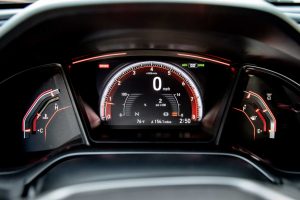
Slow Down
Many motorists speed, even just a little. Consider lightening your foot while driving on the highway and your wallet will thank you.
According to Natural Resources Canada data, you’ll use about 1 per cent more fuel for every 1 km/h beyond 100 km/h you drive. Put another way, driving at 115 km/h uses about 15 per cent more fuel than driving at 100 km/h, despite a merely modest change in your overall travel time.
For some drivers, reducing your highway cruising speed by just 10 or 20 per cent could save you hundreds of dollars a year on fuel.
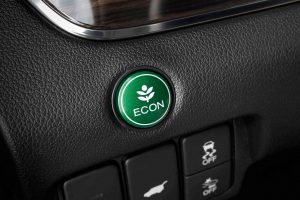
Use ECO Mode
Many newer vehicles are equipped with an ECO or ECON drive mode, which can be selected to modify vehicle operation to be more efficient. An ECO mode might limit how quickly you can accelerate, which will, in turn, hell boost fuel efficiency. Simply put, using your vehicle’s ECO mode makes it easier for you to achieve the best possible fuel economy.
If equipped, your vehicle’s ECO mode is typically engaged via a dedicated button on the dash or via a drive-mode dial or switch.
Check your owner’s manual for the full scoop. Lighter footed drivers can use the ECO mode at virtually all times to help reduce emissions and fuel costs.
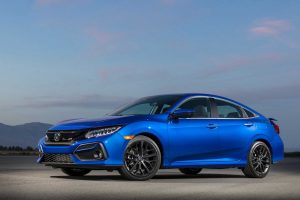
Fuel Efficient Cars
The best way to save money at the pumps is to buy a fuel efficient car from the start. TEST DRIVE 2020 Civic. The Honda Civic Hatchback rates at 6.9 L/100 km. A gas sipper. For the best fuel efficiency, go with the automatic transmission – modern automatics are no longer bound by a small number of gears and can dial in an appropriate ratio for every setting.
TEST DRIVE 2020 Civic Hatchback Today! from Gore Motors Honda
Source article written by:
Justin Pritchard. An automotive journalist, consultant, TV presenter, and photographer based in Sudbury, Ontario. Original Article

